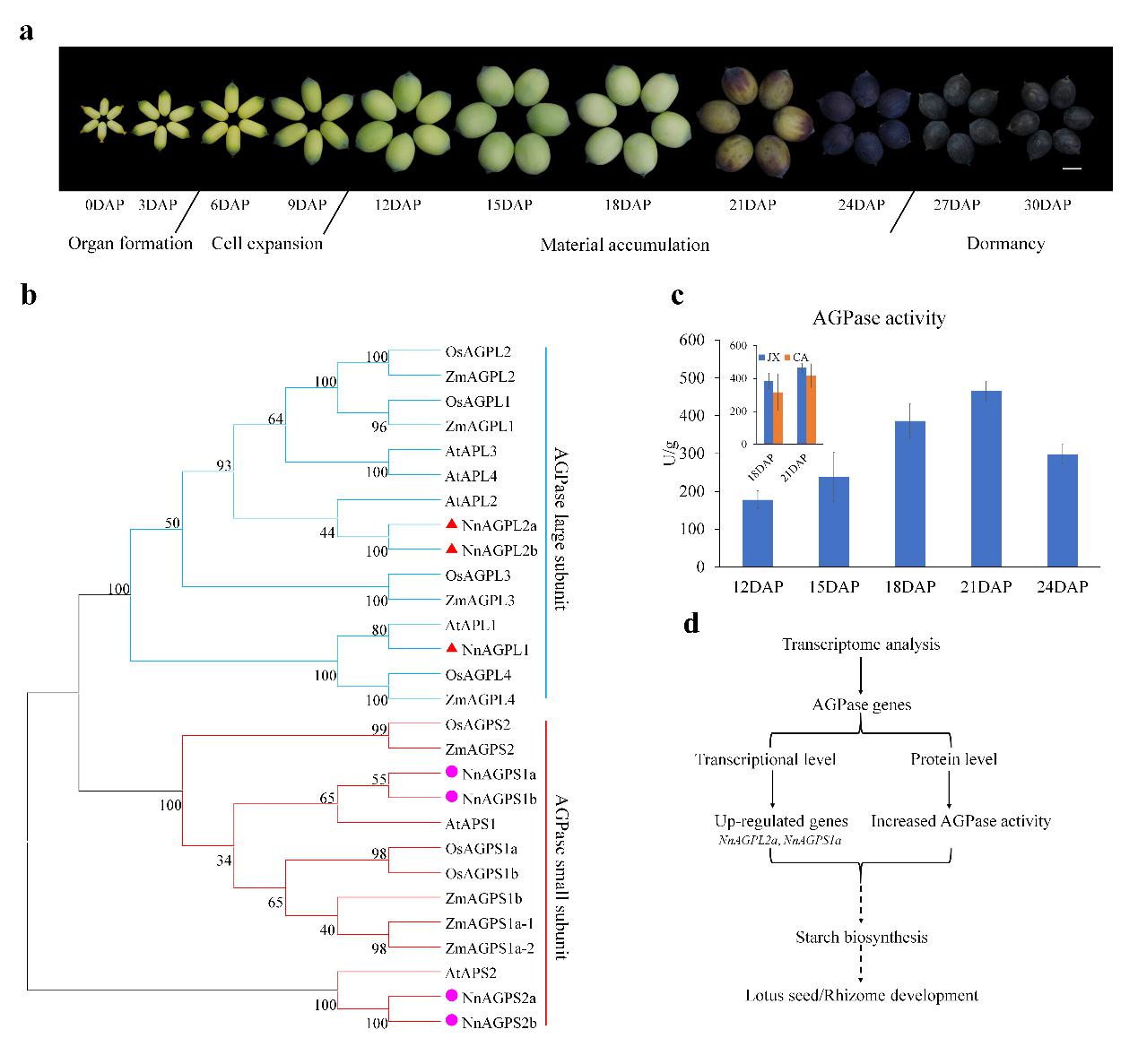Name:Mei Yang
Tell:
Email:yangmei815815@wbgcas.cn
Organization:Wuhan Botanical Garden
AGPase Genes Regulate Starch Biosynthesis in Lotus Seed
2020-12-11
Seed-lotus is widely cultivated in China, and can produce a higher yield of seeds, which are rich in carbohydrates, proteins, vitamins and numerous health-promoting antioxidants. Currently, lotus seed products are very popular in daily diets in China. Mature lotus seed contains 40 - 60% of starch in the cotyledons, thus it is considered a rich source of starch. Unlike most cereal crops, the starch of lotus seed belongs to natural high amylose, which has a promising feature in the development of hypoglycemic functional foods and low glycemic index foods. At present, the starch content of lotus seed still needs to be improved, it is important to analyze the mechanism of starch biosynthesis for improving the starch content and the quality of lotus seed.
The Lotus Resources and Genetic Improvement Research Group from Wuhan Botanical Garden described the nutritional compositions of lotus seed among 30 varieties, and analyzed ADP-glucose pyrophosphorylase (AGPase) genes to uncover their potential roles in starch biosynthesis in lotus seed.
Lotus seed reached mass maturity in about 30 days after pollination (DAP), the average content of starch was 28.20% and 47.12% in 15 DAP and 30 DAP lotus seed, respectively.
The comparative transcriptome analysis showed AGPase genes were involved in starch biosynthesis during lotus seed development. A total of seven AGPase genes were identified in the sacred lotus genome, including three and four genes encoding the large subunit and small subunit, respectively. Expression analysis revealed that NnAGPL2a and NnAGPS1a as the most predominantly expressed AGPase genes, especially in the development process in lotus seed and rhizome.
Co-expression network analysis revealed that NnAGPL2a and NnAGPS1a were co-expressed with a number of starch and sucrose metabolism pathway related genes. Most notably, the expression patterns of these two genes were accompanied by the increase in starch content and enhanced AGPase activity in lotus seed, thus were to be the key genes regulating starch biosynthesis in lotus seed.
This study presents a starting point for functional evaluation of AGPase genes in starch biosynthesis in lotus, and provides theoretical basis for breeding new lotus varieties with high-starch content.
Research was funded by the Key Research Program of Frontier Sciences CAS, the Youth Innovation Promotion Association CAS, and the National Natural Science Foundation of China. The results have been published in BMC Plant Biology entitled “Comprehensive analysis of AGPase genes uncovers their potential roles in starch biosynthesis in lotus seed”.

A brief summary of this study. a Morphological changes of lotus seed of JX (‘Jianxuan17’) during development. b Phylogenetic tree of AGPase proteins. c The dynamic changes in AGPase activity during lotus seed development. d Summary model of this study (Image by WBG)